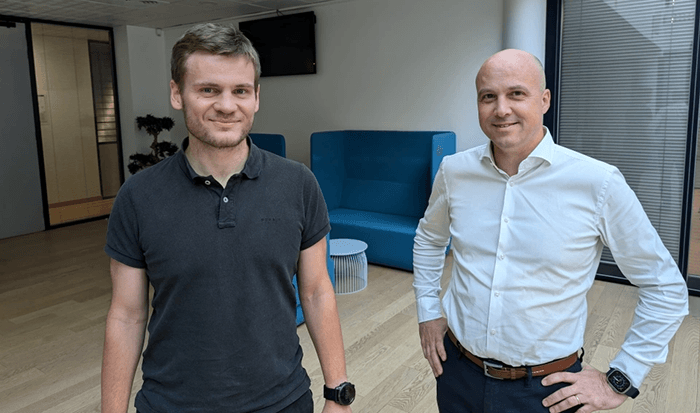Artificial intelligence in Thuasne®'s transformation service
In this interview, they talk about the Group's essential integration of artificial intelligence. From the challenges encountered to the implementation of ThuasneGPT, discover how Thuasne® uses AI to optimize its internal processes and provide innovative solutions for its employees.

Why did you create an AI department at Thuasne®?
Olivier Carré: AI has taken an increasing role in companies since its appearance, so it is essential to integrate these new skills to remain competitive. We have therefore decided to create a dedicated division within Thuasne® in July 2024. This internalization of skills allows us to gain efficiency and speed in the deployment of projects. This cluster is also intended to grow in the coming years.
What is Thuasne®'s strategy in the field of AI?
O. C.: The action plan is divided into four parts:
• The acculturation of all employees to AI through general and practical training.
• The use of generative AIs to increase productivity on simple tasks.
• The search for solutions integrating AI to improve the performance of our processes. Every new IT project takes this dimension into account.
• The development of Thuasne®'s own solutions for use cases specific to the Group.
What are the short- and long-term goals?
O. C.: In the short term, we launched a training program and deployed the first use cases. In the long term, AI will impact a majority of our company's processes. The stakes for the efficiency of our organization are very high, and it is essential for the Group to anticipate these changes.
How are AI-related projects managed within the Group?
V. S.: These projects are proposed by employees and prioritized using a decision-making grid. They can be carried out internally, with external resources, or by purchasing solutions that meet the need and are already available on the market.
We usually start by rolling out the project in the area with the greatest impactwhere the impact is the highest, and then deploy them more globally if relevant. AI projects can be cumbersome to set up, so we need to ensure a return on investment. Then, in some situations, we can do the opposite: start with a smaller pilot country, check the results, and roll out widely once the solution is up and running.
Is the use of AI dedicated to internal productivity?
V. S.: For the moment, AI is mainly dedicated to operational excellence, i.e. to the improvement of internal processes. It is already integrated into various tools at Thuasne®. This is the case, for example, with our expense report tool that pre-fills the fields by recognizing the content of the images and PDFs of the invoices. We have also integrated an AI brick into our customer relations solution to automate the processing of certain orders received by email or fax, facilitating the work of customer service. Finally, as other examples, I can mention an ongoing project that aims to control certain invoices to reduce errors or the launch of ThuasneGPT.
What are the main challenges faced when integrating AI into existing processes?
V. S.: The integration of AI must take into account Thuasne®'s strict regulatory framework inherent to the medical device sector. In addition, the balance between return on investment and implementation complexity is crucial, combining technical, data, and algorithmic constraints.
Can you tell us more about the launch of ThuasneGPT?
V. S.: ThuasneGPT encourages the supervised use of AI by employees while avoiding "Shadow IT"*. Accessible unlimited, it offers an intermediate experience between the free and paid versions of ChatGPT, in a secure environment where the data is not used to train the models.
This simple and intuitive interface makes it easy for users to interact with the tool. New features are regularly added to the platform: a text generator, a translation module that retains formatting, an image generator based on the latest image generation models, and a voice translation tool has recently been integrated. The functionalities evolve at the pace of the uses and needs of employees.
How do you see the evolution of AI at Thuasne® in the coming years?
O. C.: Thuasne® will continue to integrate AI into its processes to improve efficiency. AI is already ubiquitous in purchased solutions. In the long term, it will also be an essential component in the development of connected medical devices or applications for patients.
*Shadow IT is the use of IT-related hardware or software by a department or individual without the knowledge of the IT or security group within the organization.